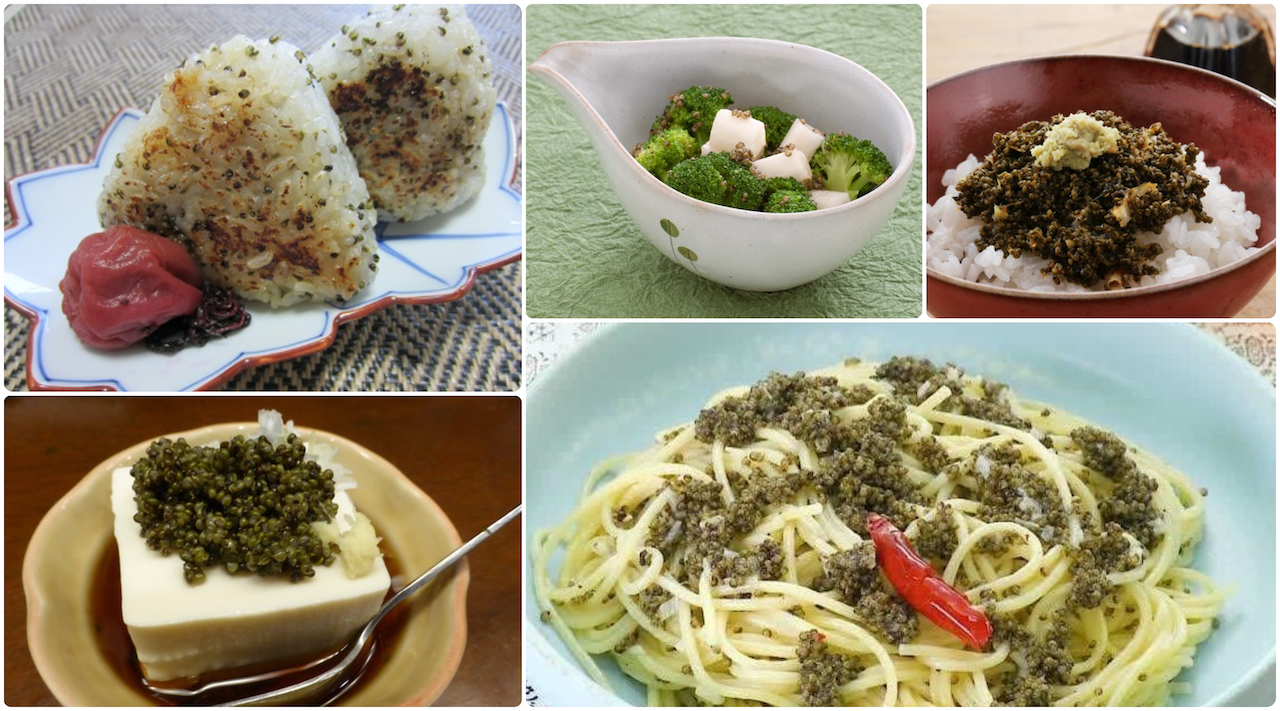
PROJECT TONBURI
Tonburi, the seeds of the broom plant, are tiny and black-green in color. Because they mimic the appearance and mouthfeel of sturgeon caviar tonburi is often referred to as hataké no kyabia (“caviar of the field”). Akita prefecture in the Tohoku produces most of Japan’s commercial crop.
Tonburi is sold in vacuum-sealed pouches and in small glass jars. Store in a cool, dark, dry spot until opening. After opening, refrigerate and use within 2 weeks.

Using TONBURI
Inhabitants of the Tohoku region enjoy tonburi in three ways:
- aé mono: tossed in with other foodstuffs
- mazé mono: mixed with other foodstuffs
- chirasu mono: scattered over other foodstuffs
If you are able to source tonburi, try using as a topping for tōfu, rice or noodles (Japanese sōmen, soba or any pasta)… or toss with rice and shape into onigiri… or, serve with vegetables.
To get you started, DOWNLOAD this reference sheet for Using TONBURI
Learn about TONBURI caviar of the fields by visiting my Kitchen Culture blog.
Read my October 2023 newsletter.




